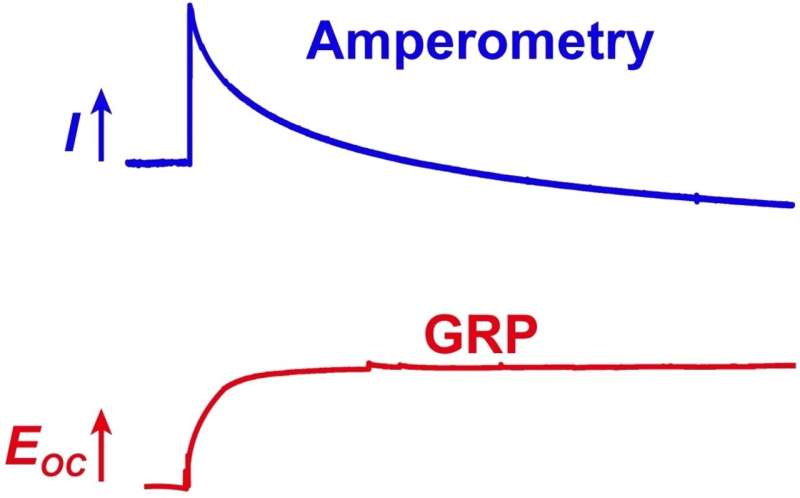This article has been reviewed according to Science X's editorial process and policies. Editors have highlighted the following attributes while ensuring the content's credibility:
fact-checked
peer-reviewed publication
trusted source
proofread
Tracking the happiness hormone: Electrochemical serotonin microsensors for stable long-term measurement in real time

Dysregulation of serotonin plays a role in many psychiatric disorders, including severe depression and anxiety. In the journal Angewandte Chemie International Edition, a research team has now introduced an implantable, electrochemical microsensor that makes it possible to study serotonin dynamics in the brain in real time. In contrast to previous sensors, these are not deactivated by deposition of serotonin oxidation products because the measurement occurs without current flow.
Serotonin, also known as the "happiness hormone," is one of our most important neurotransmitters, regulating many processes in our brain, especially our feelings, but also appetite, memory, and sleep. A better understanding of these processes on a molecular level could improve the diagnosis and treatment of mental illnesses.
Previous electrochemical methods worked with a microelectrode, on which serotonin is directly oxidized and the resulting current is measured. However, the resulting oxidation products polymerize, adhere to the electrode surface (fouling), and rapidly deactivate the sensor (about 90% signal loss within 30 minutes).
A team led by Ying Jiang and Lanqun Mao at Beijing Normal University and the Chinese Academy of Sciences (Beijing, China) has now developed a serotonin sensor that provides extremely stable signals, even during long-term experiments, because almost no fouling due to serotonin oligomers occurs. The method is based on galvanic redox potentiometry (GRP), which is a zero-current technique.
The core of the sensor is a tiny bipolar electrode, which can simplistically be described as a rod with one end protruding into the liquid being measured while the other is in an electrolyte solution with electrochemical properties that are precisely adjusted to the analyte molecule.
An electrical contact is established exclusively through the electrolyte solution. At one end of the electrode, an electrochemical equilibrium is established between electrolyte ions in various charge states (in this case: IrCl62–/IrCl63–), at the other end, there is an equilibrium between serotonin and its oxidized form. By using a device to measure the voltage, it is possible to measure the spontaneously established potential difference relative to a reference electrode.
This difference is dependent on the serotonin concentration. Because only the voltage is measured and no current flows, there is almost no deposition of oligomeric serotonin products. Quantitative measurements are possible over a broad range of concentrations and over a long period of time.
Sensors implanted into the brains of guinea pigs were able to follow the release of serotonin after stimulation with potassium ions in real time. The team made one interesting observation after administering Escitalopram, a serotonin reuptake inhibitor often prescribed to treat severe depression and anxiety disorders. Its activity seems to depend more strongly on slowing the uptake process than on modulation of the extracellular serotonin concentration. This insight could be important for the treatment of psychiatric disorders.
More information: Fenghui Zhu et al, Galvanic Redox Potentiometry for Fouling‐Free and Stable Serotonin Sensing in a Living Animal Brain, Angewandte Chemie International Edition (2023). DOI: 10.1002/anie.202212458
Journal information: Angewandte Chemie International Edition
Provided by Wiley





















